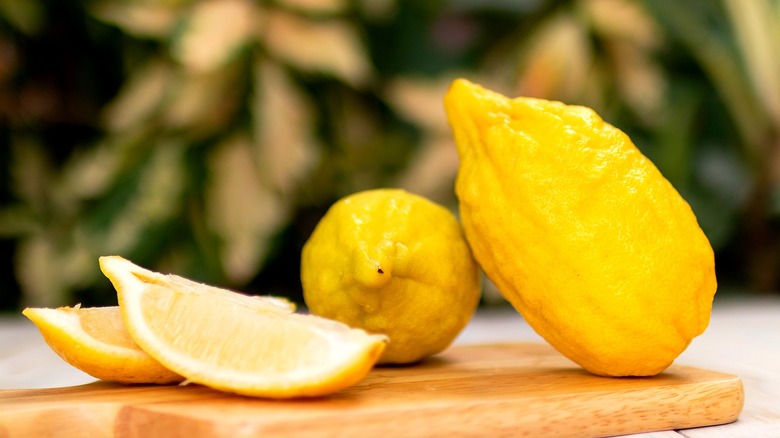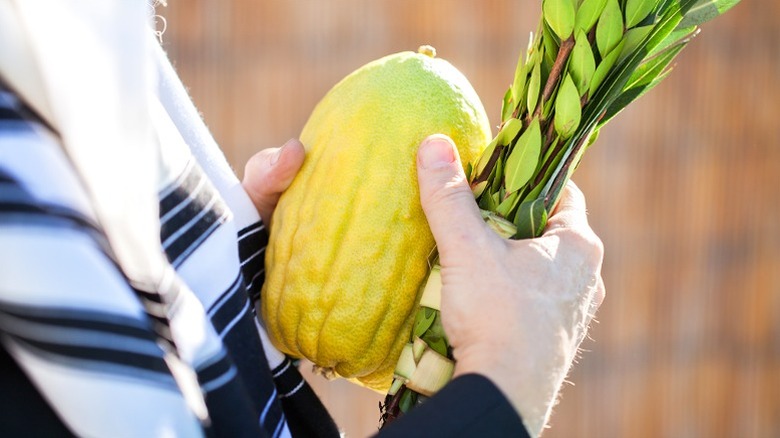Is An Etrog The Same As A Lemon, And What's Its Significance During Sukkot?
Etrogs and lemons are both citruses that grow on trees and share a waxy yellow peel. They look similar from a distance, but they are not interchangeable in the kitchen or for religious ceremonies. Etrogs are citrons used in the Jewish holiday of Sukkot, so you'll want to know how to spot one at first sight.
One major difference is that lemon juice is a common ingredient in cooking, while etrogs are cherished for their peels and pith. A round fruit with a smooth peel, the lemon is believed to have originated in Southeast Asia, and lemons grow all over the Middle East. It's not uncommon to find lemon trees growing in people's backyard gardens in Jordan, Palestine, and Lebanon. Just one lemon holds up to 1.5 fluid ounces of juice, making lemons perfect for cooking applications. You can squeeze out every last drop for a tall glass of lemonade with its sour goodness. Lemons' zesty tang can transform familiar dishes into showstoppers like fluffy lemon ricotta pancakes. Lemons' applications are endless — whether they are used in pasta, lobster, or sorbet.
Etrogs are oblong citrons with bumpy skin, and they're often bigger than lemons. They have less pulp than lemons, despite their size, so they're not as optimal for juicing. People love these fruits because their peels make for a great candied treat. Etrog can be a part of desserts like cookies or turned into jams. This plant goes beyond an ingredient and into a part of Jewish tradition as an important symbol.
Etrogs are a ceremonial fruit in Jewish tradition
Sukkot is a Jewish thanksgiving and harvest celebration to commemorate the exodus from Egypt — a time when they fled the country and made a pilgrimage across the desert in search of a better life. The desert was a harsh area without reliable food sources, and these ancient Jewish people could only build temporary homes to survive. To honor these difficult times, modern Jewish people carry on the tradition of camping in makeshift shelters.
The etrog plant is one of four branches used in the festivities of this holiday, including a palm branch, myrtle, and willow. These plants are built into the temporary shelters and waved in a prayer ritual to honor the Jewish people's Creator. Because of Sukkot's sacred nature, the plants used in their ceremonies can't be blemished in any way. In an article for Exploring Judaism, Rabbi Dan Ornstein explains that the etrog must be grown and harvested in perfect condition — part of the mindset being that you wouldn't offer a broken gift to a loved one.
However, the etrogs don't have to go to waste once the Sukkot rituals commence, according to the American Jewish Historical Society. You're more than welcome to cook them however you want and there are recipes you can use them for in accordance with the kosher diet. So enjoy your etrogs and have a wonderful Sukkot!

